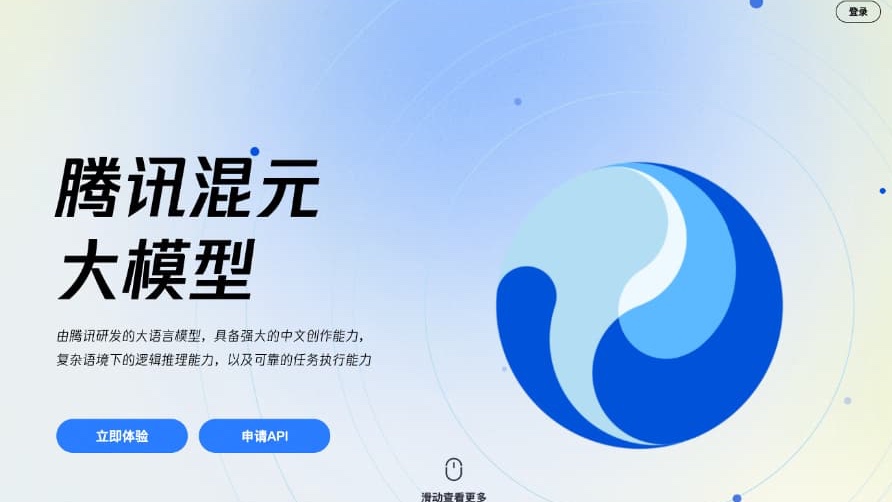Hunyuan Video vs. Commercial Closed-Source Models: Performance and Open-Source Advantages
 By Janey Sakshi
By Janey Sakshi1. Introduction: The Competitive Landscape of Video AI Models
Video generation and processing technologies are rapidly becoming a focal point in the AI industry. While commercial closed-source models like OpenAI’s Sora, Runway Gen-3, and Luma 1.6 dominate the market, open-source alternatives such as Hunyuan Video are gaining significant traction. The question is: How do users choose the right model when balancing performance, flexibility, and cost? This blog aims to provide a comprehensive comparison between Hunyuan Video and commercial closed-source models, helping users make informed decisions.
Hunyuan Video, developed by Tencent, is a groundbreaking open-source video foundation model with over 13 billion parameters, making it the largest open-source video generative model available today. Its release marks a significant step toward bridging the gap between closed-source and open-source video generation technologies, empowering developers, researchers, and creators to experiment and innovate freely.

2. Performance Comparison: Hunyuan Video vs. Commercial Closed-Source Models
2.1 Video Generation Quality
- Hunyuan Video:
- Supports high-resolution video generation (up to 4K), excelling in detail restoration, dynamic effects, and scene coherence.
- Utilizes a "Dual-stream to Single-stream" hybrid model design, enabling seamless integration of visual and semantic information for superior output.
- Continuously optimized through an active open-source community, ensuring rapid iteration and improvement.
- Commercial Closed-Source Models:
- Rely on internal R&D, resulting in slower update cycles and limited transparency.
- While some models perform exceptionally well in specific scenarios, their closed ecosystems restrict versatility and customization.
2.2 Processing Speed and Efficiency
- Hunyuan Video:
- Supports distributed computing, optimizing efficiency for large-scale video processing.
- Open-source nature allows users to customize optimizations based on hardware capabilities, reducing computational costs.
- Commercial Closed-Source Models:
- Typically depend on cloud-based computing, with processing speeds limited by service providers’ resources.
- Users cannot directly optimize underlying algorithms, leading to potential inefficiencies.
2.3 Multimodal Support
- Hunyuan Video:
- Enables multimodal generation from text, images, and audio to video, supported by a rich ecosystem of plugins and extensions.
- Uses a pre-trained Multimodal Large Language Model (MLLM) as a text encoder, enhancing image-text alignment and complex reasoning.
- Commercial Closed-Source Models:
- Some models excel in multimodal capabilities but are limited by their closed ecosystems, restricting flexibility and innovation.
3. Open-Source Advantages: The Unique Value of Hunyuan Video
3.1 Transparency and Customizability
- Hunyuan Video:
- Open-source code allows users to deeply customize the model to meet specific needs, fostering innovation and experimentation.
- Community-driven development ensures transparency and trustworthiness, addressing the "black box" issue prevalent in closed-source models.
- Commercial Closed-Source Models:
- Operate as black boxes, with users unable to understand internal mechanisms or modify the model.
- Customization often requires additional fees or is simply unavailable, limiting user control.
3.2 Cost Efficiency
- Hunyuan Video:
- Free and open-source, significantly lowering the barrier to entry for businesses and developers.
- Users can optimize computational costs based on their own resources, making it accessible to a wider audience.
- Commercial Closed-Source Models:
- High subscription fees and API call costs can lead to significant budget strain, especially for long-term usage.
3.3 Community Support and Ecosystem Growth
- Hunyuan Video:
- A vibrant open-source community provides extensive documentation, tutorials, and plugin support, ensuring rapid response to user feedback.
- Continuous improvement through community contributions fosters a dynamic and innovative ecosystem.
- Commercial Closed-Source Models:
- Dependent on official support, which can be slow to respond and lacks the collaborative nature of open-source communities.
4. Use Case Comparison: Which Model is Right for You?
4.1 Enterprise Applications
- Hunyuan Video: Ideal for businesses requiring high customization and cost control, enabling tailored solutions for specific needs.
- Commercial Closed-Source Models: Suitable for companies with ample budgets and a reliance on technical support, offering plug-and-play solutions.
4.2 Developers and Researchers
- Hunyuan Video: The open-source nature makes it the top choice for developers and researchers, providing full access to the model for experimentation and innovation.
- Commercial Closed-Source Models: Useful for rapid prototyping but limited in long-term research potential due to restricted access and customization.
4.3 Individual Users and Creators
- Hunyuan Video: Low cost and high flexibility make it perfect for individual creators, enabling them to produce professional-quality videos without breaking the bank.
- Commercial Closed-Source Models: Offer plug-and-play solutions but come at a higher price, making them less accessible for individual users.
5. Future Outlook: The Rise of Open-Source Models
- Hunyuan Video’s Potential: As the open-source ecosystem grows, Hunyuan Video is poised to surpass commercial closed-source models in both performance and functionality.
- Industry Trends: Open-source models are reshaping the AI landscape, driving innovation and accessibility while reducing reliance on proprietary solutions.
- User Recommendation: Embrace open-source solutions for greater flexibility, sustainability, and the ability to contribute to the future of AI technology.
6. Conclusion: The Competitive Edge of Hunyuan Video
- Summary: Hunyuan Video offers significant advantages in performance, cost, and flexibility, making it the ideal choice for users seeking customization and control.
- Call to Action: Experience Hunyuan Video today, join the open-source community, and be part of the future of video AI technology.
7. Appendix: Resource Links
- Hunyuan Video GitHub Repository: https://github.com/Tencent/HunyuanVideo
- Hugging Face Model: https://huggingface.co/tencent/HunyuanVideo
- Official Documentation and Examples: GitHub Documentation
- Online Demo Platform: Hunyuan Video Generation Platform
8. FAQ: Frequently Asked Questions
Q1: What makes Hunyuan Video different from commercial closed-source models?
A: Hunyuan Video is open-source, offering full transparency, customizability, and cost efficiency. It also boasts a vibrant community for continuous improvement, unlike closed-source models that are proprietary and often expensive.
Q2: Can Hunyuan Video generate high-resolution videos?
A: Yes, Hunyuan Video supports high-resolution video generation up to 4K, ensuring exceptional visual quality and detail.
Q3: Is Hunyuan Video suitable for individual creators?
A: Absolutely! Hunyuan Video’s low cost and high flexibility make it ideal for individual creators looking to produce professional-quality videos without significant financial investment.
Q4: How does Hunyuan Video handle multimodal inputs?
A: Hunyuan Video supports multimodal generation from text, images, and audio to video, leveraging a pre-trained Multimodal Large Language Model (MLLM) for enhanced text-video alignment and complex reasoning.